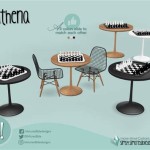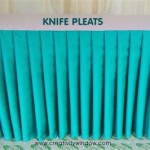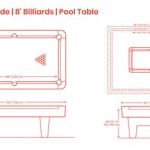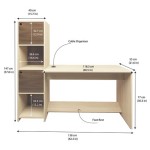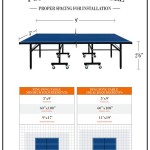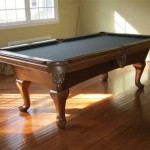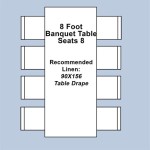Wooden Plank Table Tops: A Comprehensive Guide
Wooden plank table tops represent a sought-after choice for homeowners and businesses seeking a blend of visual appeal, durability, and natural character in their furniture. These table tops, constructed from multiple wooden planks joined together, offer a unique aesthetic that is distinct from solid wood slabs or manufactured materials. The construction technique allows for larger surface areas and imparts a rustic or contemporary feel, depending on the wood species, finish, and edge detailing employed.
The popularity of wooden plank table tops stems from their versatility. They can be integrated into a wide range of interior design styles, from farmhouse and industrial to modern and minimalist. The inherent variations in grain patterns, knots, and color within the individual planks contribute to the individuality of each table, making it a one-of-a-kind piece. This article will delve into the various aspects of wooden plank table tops, encompassing their construction, material options, design considerations, and maintenance requirements.
Construction and Design Considerations
The construction of a wooden plank table top involves several key steps, beginning with the selection of suitable lumber. The wood needs to be properly dried and acclimatized to minimize warping or cracking after assembly. Commonly, kiln-dried lumber is used to ensure a stable moisture content. Once the lumber is prepared, the individual planks are carefully selected and arranged to create an aesthetically pleasing and structurally sound tabletop.
The planks are then joined together using various methods, the most common being edge-gluing. Edge-gluing involves applying a strong adhesive to the edges of the planks and clamping them together until the glue cures. This creates a continuous, solid surface. Alternatively, tongue-and-groove joinery can be employed for added strength and stability. This method involves creating interlocking profiles on the edges of the planks, which not only provide a larger gluing surface but also offer mechanical resistance to movement.
Reinforcement is often incorporated into the underside of the table top to prevent warping or sagging, particularly in larger sizes. This can take the form of wooden cleats, metal bars, or a combination of both. These reinforcements are typically attached perpendicular to the grain of the planks, providing support and distributing weight evenly across the surface.
Edge detailing is another crucial design consideration. The edges of the table top can be left square, rounded, beveled, or given a live-edge appearance. Square edges offer a clean and modern look, while rounded edges are safer and more comfortable. Beveled edges add a touch of sophistication, and live edges showcase the natural contours of the wood, creating a rustic and organic aesthetic. The choice of edge detail significantly impacts the overall style of the table.
The dimensions of the planks themselves also influence the appearance of the table top. Wider planks tend to create a more contemporary aesthetic, while narrower planks evoke a more traditional or rustic feel. The number of planks used also affects the visual texture of the table top. Fewer planks result in a cleaner, simpler look, while more planks create a richer, more varied surface.
Material Options and Their Properties
The choice of wood species significantly impacts the visual appeal, durability, and cost of a wooden plank table top. Different wood species offer distinct grain patterns, colors, and hardness characteristics. Hardwoods, such as oak, maple, walnut, and cherry, are generally preferred for their strength and resistance to wear and tear. Softwoods, such as pine, fir, and cedar, are more affordable but are also more susceptible to scratches and dents.
Oak is a popular choice for its durability, distinctive grain pattern, and availability. White oak is particularly resistant to moisture and rot, making it suitable for outdoor applications. Red oak is slightly less durable but offers a more reddish hue. Maple is known for its smooth, uniform grain and light color, making it a versatile option that can be stained to match a wide range of décor styles. Walnut is prized for its rich, dark color and elegant grain pattern. It is a relatively soft hardwood, but it is still durable enough for table tops.
Cherry is another attractive hardwood with a reddish-brown color that deepens over time. It is known for its smooth texture and beautiful grain. Pine is a softwood that is often used for rustic or farmhouse-style tables. It is relatively soft and prone to dents and scratches, but it can be protected with a durable finish. Fir is another softwood option that is similar to pine but has a slightly more pronounced grain pattern. Cedar is known for its aromatic fragrance and resistance to insects and decay, making it a good choice for outdoor use.
Beyond the species, the grade of the wood also plays a role in its appearance and quality. Clear grade lumber is free of knots and imperfections, while character grade lumber contains knots, mineral streaks, and other natural features. Character grade lumber is often preferred for rustic or industrial-style tables, as it adds to the natural character and uniqueness of the piece. The moisture content of the wood is also crucial. Kiln-dried lumber with a moisture content of 6-8% is ideal for table tops, as it minimizes the risk of warping or cracking.
The selection of the wood should also take into account the intended use of the table. For example, a dining table that will be subjected to frequent use and spills should be made from a durable hardwood with a protective finish. A coffee table that will primarily be used for decorative purposes can be made from a softer wood or a less durable finish.
Finishing and Maintenance
The finish applied to a wooden plank table top plays a critical role in its appearance, durability, and resistance to stains and moisture. Various finishing options are available, each with its own set of advantages and disadvantages. Common finishes include varnish, lacquer, polyurethane, oil-based finishes, and water-based finishes.
Varnish and lacquer are durable, film-forming finishes that provide excellent protection against scratches, stains, and moisture. They are typically applied in multiple coats and require sanding between coats to achieve a smooth, even surface. Polyurethane is another popular choice for its durability and resistance to chemicals and abrasion. It is available in both oil-based and water-based formulations. Oil-based polyurethanes tend to be more durable and offer a warmer tone, while water-based polyurethanes are lower in VOCs and dry faster.
Oil-based finishes, such as linseed oil and tung oil, penetrate the wood and enhance its natural beauty. They provide a soft, matte finish that is easy to repair. However, they offer less protection against scratches and moisture than film-forming finishes. Water-based finishes are becoming increasingly popular due to their low VOC content and ease of application. They dry quickly and offer good protection against scratches and moisture, although they may not be as durable as oil-based finishes.
The choice of finish depends on the desired aesthetic and the intended use of the table. For a high-gloss, durable finish, varnish or lacquer may be the best choice. For a natural, matte finish, oil-based finishes are a good option. For a low-VOC, easy-to-apply finish, water-based finishes are a suitable choice.
Regular maintenance is essential to keep a wooden plank table top looking its best. Dusting the table regularly with a soft cloth will prevent the buildup of dirt and grime. Spills should be cleaned up immediately to prevent staining. Avoid using harsh chemicals or abrasive cleaners, as these can damage the finish. For oil-based finishes, re-oiling the table periodically will help to maintain its moisture content and prevent drying out. For film-forming finishes, applying a furniture polish will help to protect the surface and restore its shine.
It's also important to protect the table from excessive heat and humidity. Avoid placing hot dishes directly on the table surface, and use coasters under glasses to prevent water rings. If the table is located near a window, protect it from direct sunlight, which can cause the finish to fade over time. By following these simple maintenance tips, you can ensure that your wooden plank table top remains a beautiful and functional piece of furniture for many years to come.

Wooden Table Top At Rs 25000 Piece Solid Wood Tops In Hyderabad Id 22187142755

Teak Plank Wood W Metal Edge Tabletop

Reclaimed Wood Table Top Straight Planks Rc Supplies

Reclaimed Wood Plank Table Top With Metal Edge

Trueplank Hardwood Plank Table Tops In Maple And Walnut Furniturelab

Table Tops

1 Round Table Top Maple Plank Rustic Wood Unfinished Wine Barrel

Earthy Oak Resin Table Top Timber

Diy Farmhouse Table Top The Right Way Saws On Skates

Reclaimed Wood Plank Table Top With Breadboard Ends

